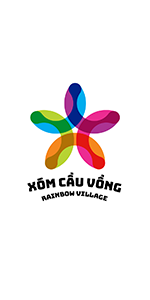Gay men get HIV at higher rates than any other group in the United States, and there are many reasons for this. Biological factors dramatically increase a gay man’s vulnerability to infection. Social, cultural, and economic factors—such as stigma, racism, homophobia, and high rates of poverty—further compound the risk.
Regardless of the causes, securing access to testing, prevention, and PrEP to lower HIV transmission in this high-risk group remains a pressing issue. There are numerous free or low-cost confidential testing and treatment sites offered by the U.S. Department of Health and Human Services via their online testing locator.
This article looks at the biological, sexual, social, and psychological factors that fuel high HIV infection rates among men who have sex with men in the United States, and ways to prevent or reduce HIV risk among this group.
HIV Statistics Among MSM
Men who have sex with men (MSM) describes males who have sex with other males regardless of how they identify. MSM focuses on behavior rather than self-identification.
The term was created during the 1990s as a means to track the route of HIV transmission and the spread of infection through male-to-male sexual activity. Before this, tracking the disease based on a person’s sexual orientation meant that many infections were left unaccounted for.
While MSM represents between 2% and 6.8% of the U.S. population, they account for 55% of all HIV infections. According to the Centers for Disease Control and Prevention (CDC), if the current trend continues, as many as one in six MSM will be infected with HIV in the course of their lifetime.
Black MSM are disproportionately affected having no less than a 50% lifetime risk of getting HIV, according to the CDC.1
The CDC reported other disparities in MSM infection rates, including the fact that:1
- Over 685,000 HIV-positive MSM are living in the United States today, of whom 15% are undiagnosed.
- MSM accounts for 67% of all new HIV diagnoses as well as 83% of all new diagnoses among men 13 and over.
- MSM between the ages of 13 and 24 account for 92% of all new HIV infections among men.
LGBT and HIV
Transgender people account for 0.3% of the U.S. population but represent 2% of all new HIV diagnoses.2 Transwomen are especially vulnerable with one of every five having HIV. Causes for the disparity include a lack of family support, healthcare discrimination, higher rates of violence, alcohol or drug use, and survival sex work.3
Lesbians have lower rates of HIV than heterosexual people or MSM. However, women who have sex with women (WSW) may also have risk factors that increase the odds of HIV. This injection drug use, sex with men, lack of access to healthcare, and violence and abuse (which can lead to low self-esteem and sexual risk-taking).
Biological Risk Factors
MSM are at greater biological risk of HIV because of anal sex. Simply put, a person is more likely to get HIV from anal sex than vaginal sex. The risk may be as much as 18 times greater than that of vaginal sex.
There are several explanations for this:
- The makeup of rectal tissues: The vagina is lined with layers of cells, known as epithelial cells, that provide a barrier against infection. The rectum is lined with only a single layer of these cells.5
- The fragility of rectal tissues: Rectal tissues are fragile and prone to breakage. This provides the virus easier direct access into the body.5
- The immune response: Rectal tissues are also rich in a type of immune cell called CD4 T cells. Ironically, these are the very cells that HIV targets for infection.6
Because of these and other factors, HIV can establish an infection quickly. Studies have shown that within an hour of rectal exposure, HIV can breach the body’s frontline immune defense, and, within 24 hours, spread throughout the body.5
Sexual Risk Factors
Sexual behaviors also add to the risk of HIV in MSM. This includes having multiple sex partners or using online hookup sites. While these factors are not exclusive to MSM, they can amplify the risk in certain groups.7
In communities of color where rates of stigmatization are high, the sexual networks tend to be smaller, increasing the likelihood of exposure to the virus.8
Even among the larger MSM community, the high rate of HIV translates to a higher risk of infection when compared to the heterosexual population.7
Studies have shown that MSM, as a group, are also at greater risk because:
- MSM are more likely to have multiple sex partners when compared to men who exclusively have sex with women.9
- Intergenerational sexual partnerships may increase the risk of HIV among young MSM. This matters because the older someone is, the more sexual encounters (and chances of HIV exposure) they are likely to have had.10
Condomless Sex
Condomless anal sex further compounds the risk of getting HIV.
While the risk is greater for the receptive (“bottom”) partner, the insertive (“top”) partner is also at significant risk. This is because rectal fluids contain a high concentration of HIV—in some cases as much as five to 25 times higher than in blood or semen.11
Condom Use Among MSM
According to a 2022 study from the CDC, the rate of condomless sex among HIV-positive MSM has increased from 46.0% in 2012 to 70.5% in 2017. If the rate continues to increase, it may hinder progress toward ending the HIV/AIDS epidemic.12
Socioeconomic Risk Factors
Certain groups are at greater risk of HIV, most especially Black and Latinx MSM.7
Poverty, racism, and high rates of unemployment all contribute to disproportionately high rates of HIV among people of color in general. Poverty not only limits a person’s access to healthcare but also increases the likelihood of incarceration, substance abuse, and housing insecurity, all of which are risk factors for HIV.13
National Institutes of Health. To end HIV epidemic, we must address health disparities.
In 2018, the poverty rate among Black and Latinx people in the United States was 22% and 16% compared to 9% among White people.14 Not surprisingly, this translates to higher rates of HIV in communities of color, particularly Black and Latinx MSM.
HIV Disparity in Black MSM
Despite accounting for less than 1% of the U.S. population, Black MSM represented 31% of all new HIV infections among MSM and between 20% to 25% of all new HIV infections overall.15
While the rate of new HIV infections has been on the decline among most MSM (including Black MSM) in recent years, the rate among Latinx MSM has increased by 13%, according to the CDC.1
Stigma, Homophobia, and Racism
Stigma can also play a role in HIV transmission. People with HIV are frequent targets of stigma—not just because of their HIV status but also because of their sexual orientation and race.
Some people wrongfully believe that the high rate of HIV confirms that gay and bisexual people are “promiscuous,” “diseased,” or “immoral.” This attitude can send many MSM into hiding.
Rather than subject themselves to shame or discrimination, some men may avoid HIV testing and treatment until the disease is advanced and harder to manage. Testing positive may also force them to come out about how they got infected, which they may not be ready to do.
Among those who test positive, isolation and a lack of social support can contribute to depression, alcohol or drug abuse, sexual risk-taking, and inconsistent medical care. Many who start treatment for HIV do not continue.16
A 2021 study from the Rutgers School of Public Health found that HIV stigma, both perceived and real, affected MSM in several ways:17
- Internalized stigma translates to lower rates of HIV treatment.
- MSM with internalized stigma are more likely to engage in risky sexual behaviors like multiple partners, condomless sex, and drugs with sex.
- Perceived healthcare discrimination translates to less awareness of HIV prevention strategies, particularly among Black MSM.
- Stigma, homophobia, and racism contribute to the inconsistent use of condoms and other preventive strategies, particularly among younger MSM of color.
Preventing HIV in MSM
As dire as the statistics may seem, there are effective ways to reduce the risk of HIV on an individual basis. This includes limiting your number of sexual partners and engaging in sexual practices (such as mutual masturbation or oral sex) that pose minimal risk of transmission.
Central to the prevention of HIV are two important tools: condoms and a drug-based strategy known as HIV pre-exposure prophylaxis (PrEP).
Condoms
One of the most effective ways to reduce your risk of HIV is by using a condom every time you have sex. This includes the ONE condom approved by the Food and Drug Administration (FDA) for use in anal sex. To avoid slippage or bursting, choose a condom that fits correctly.
Condoms not only reduce the risk of HIV but other sexually transmitted infections (STIs)) as well. This is important because STIs can increase the risk of getting HIV, either by creating open sores (such as with syphilis or herpes) or by attracting more defensive CD4 T-cells to the site of the infection (which HIV preferentially infects).18
PrEP
HIV pre-exposure prophylaxis (PrEP) consists of a daily dose of the drugs Truvada (tenofovir DF + emtricitabine) or Descovy (tenofovir AF + emtricitabine) which can reduce your risk of getting HIV by up to 99%. There is also an injectable form of PrEP called Apretude (cabotegravir) that only requires one shot every two months.19
If you have HIV, you can reduce the odds of infecting others to zero by starting antiretroviral therapy and achieving an undetectable viral load (meaning that no viruses were detected on blood tests).
By maintaining an undetectable viral load, you cannot pass HIV to others—a strategy popularly referred to as U=U (Undetectable = Untransmittable).20
Summary
Numerous factors place men who have sex with men (MSM) at a high risk of HIV. These include biological vulnerabilities, sexual practices, and social and economic disparities that can affect how a person accesses HIV prevention, testing, or treatment.
Black and Latinx MSM are disproportionately affected due to the intersection of these and other risk factors, including racism and homophobia.
Source: VerywellHealth

